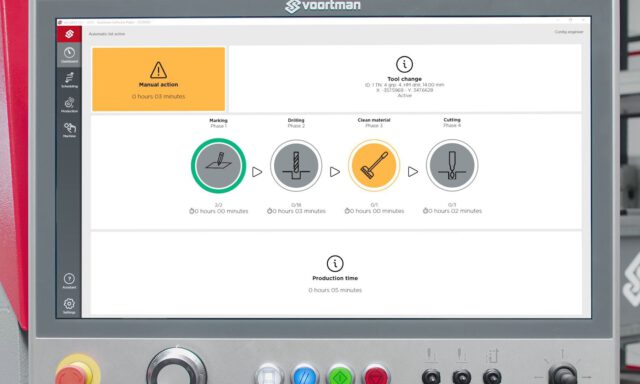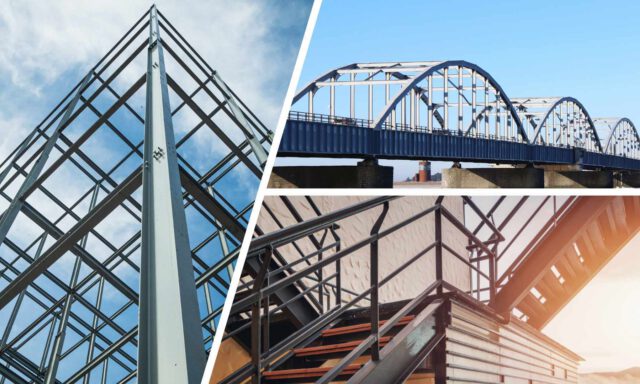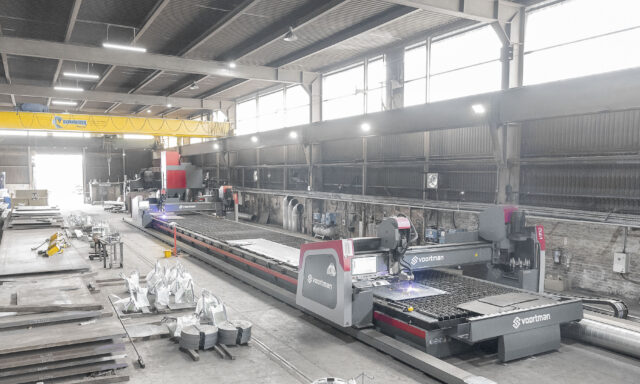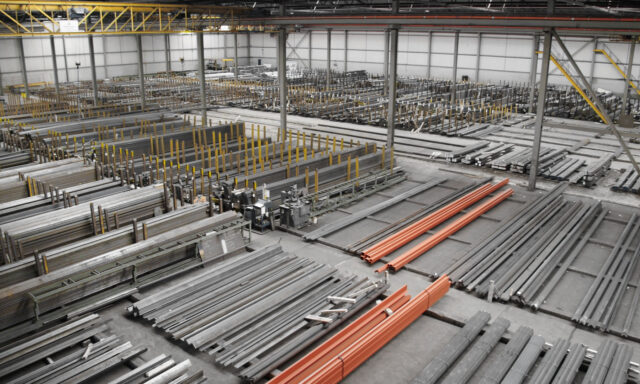- Plasma
- Cutting
- Plate
- Quality
- Automation
- Manufacturing
- Fabrication
Plasma cutting: rapidly developing
Plasma cutting explained
Plasma cutting is a thermal process used to cut electrically conductive materials. Materials predominantly cut with plasma are mild steels, stainless steels and aluminiums but also brass, copper or even gold. Plasma cutting is often used with mild steels in the thickness range of 3 mm (.125”) up to 50 mm (2.000”). Plasma cutting is more than three times faster than oxy-fuel cutting in the lower mild steel thickness range (3 mm up to 25 mm/0.125” up to 1.000”). Furthermore, capital expenditures for the same size machine are 75% lower than high-powered fiber lasers while maintaining or outpacing cutting speeds at a medium thickness (12 mm/0.500”) and up. For medium to thick stainless steels where oxy-fuel is not an option at all, plasma cutting is by far the preferred cutting technology. Depending on your material type, material thickness and variation in product mix, plasma cutting is the suitable process compared to other thermal processes (laser or oxy-fuel). If the variation in your product mix is relatively high, other processes with lower operational costs or capital expenditures such as oxy-fuel become more economical efficient.
High-definition plasma
Plasma has developed over the years with High-definition plasma (Less taper, better perpendicularity, higher speeds and better tolerances). Plasma gained commercial traction at the start of the 2000 era and even expanded due to the introduction of improved hole and small contour technologies in the last decade. Edge roughness of a High-definition plasma cut part is generally significantly better than a laser- or oxy-fuel cut while part taper/perpendicularity is a bit higher (2 to 4 degrees) and part tolerances in general are larger than a laser cut.
Voortman technologies to counteract natural behavior of plasma
To further improve the cutting results of the plasma cutting process, Voortman introduced a lot of technologies in the CNC control equipped on most plasma cutting machines, to counteract the natural behavior of plasma. Technologies which are available on most plasma cutting machines are “I-cut”, to counteract the standard taper, or the Dross-inhibitor, to reduce the amount of dross created with piercing, affecting your cut afterwards. The motion capabilities of the plasma cutting machine range are also the best available in the market, which further reduces the roughness of your plasma cut and improves hole cylindricity.










